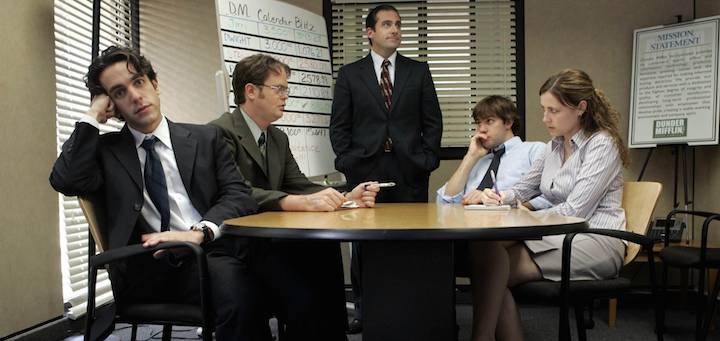
Everybody hates meetings, but the American workplace keeps having them. Why?
We’re looking at you, technology.
In a study earlier this year, researchers at the University of Nebraska figured that the average worker has 11 meetings a day and the total amount of wasted time amounts to $37 billion a year.
Part of the problem, CNBC reports today, is that managers want to make employees feel valued and involved, so they have meetings to hear what they have to say, then, of course, go do what they were going to do anyway. Here’s a note to bosses: Employees recognize this scam.
But it’s not just phony democracy that’s gumming up the workplace, CNBC says. It’s technology’s fault for making meetings easy to schedule and — perhaps more important — stripping human contact from the workplace.
One can point the finger at the rise of calendar software like IBM’s Lotus or Microsoft’s Schedule+ product, both released in the early 1990s. The software enabled workers to claim hours of each other’s time with a mere click, and made increasing the size of a meeting as easy as tapping out a few keystrokes.
“The ease with which you can have a meeting and draw someone into a meeting is really pretty tremendous,” Rogelberg said. The burden is now on meeting invitees, who can avoid invitations only by filling up their calendar blocks with fake meetings.
Russell Clayton, a professor at St. Leo’s University who studies workplace issues, said while he knows of no research into the origins of meeting creep, he thinks technology could also be playing an unexpected role.
“It is possible that meeting ‘inflation’ is occurring because workers still feel comforted on some level by getting in a room together … and this comfort may be needed because of all of the technological advances that are supposed to help us stay connected do not truly connect us,” he said. “That is, the face-to-face meetings provide the warmth of a real meeting that computers, software, apps cannot.”
One Harvard researcher says one solution is “walk and talk meetings.” People who walk are more likely to feel engaged in the company, and they’re more creative.
